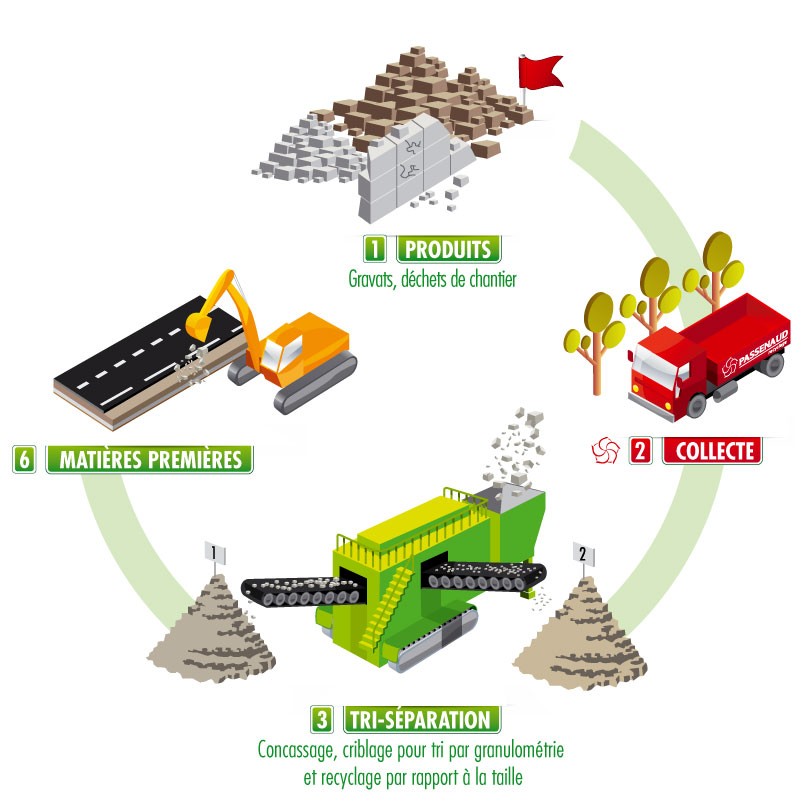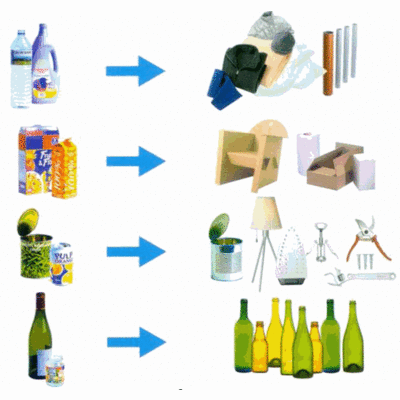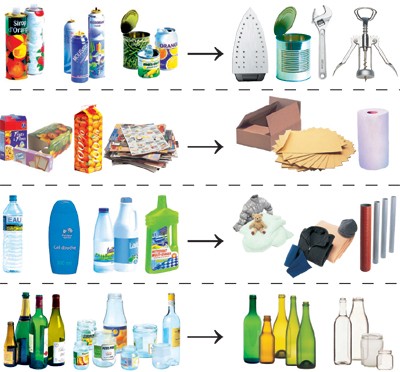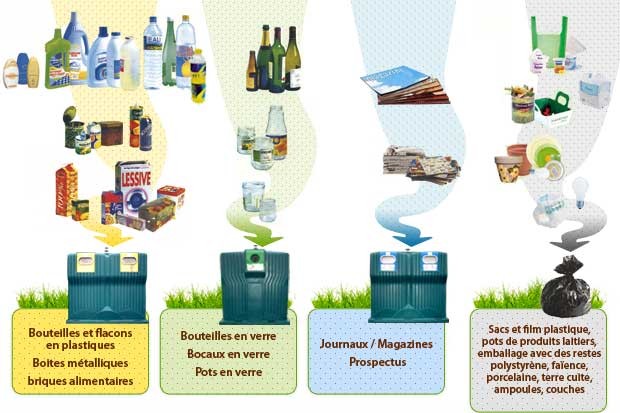
THE RECYCLING
RECYCLING - camping normandy - camping near paris - camping holidays
Why should you recycle your waste?
Over the past few years, the volume of waste produced by each inhabitant in France and Europe has continued to increase. This represented a real problem and a threat to the environment, because the only solution we had, only twenty years ago, was to destroy this waste by burning it, or to dispose of it by burying it.
A change of mentality was needed to address this issue: instead of systematically eliminating all waste, we have chosen to value a good part of it, that is to say to transform them for reuse.
Recycling waste has a double benefit
First of all, it saves raw materials and therefore preserves our planet's natural resources. It also reduces the volume and weight of our bins and therefore limits the risk of air and soil pollution.
A law was thus born on the national level on July 13, 1992 to encourage and regulate the sorting of recyclable waste and to bring about a change in behavior on the part of all citizens.
This policy extends over 10 years and stipulates thatno recoverable waste should be stored or destroyed after 2012. The only waste admitted to landfills will be waste that cannot be recovered and which we call "ultimate waste".
In the parking lot of the campsite you will find a container for recycling!
Plastic bags cannot be recycled: Indeed, do not put plastic bags and plastic films for recycling. The rest is recycled!
Oil bottles also go for recycling: For several years, all plastic or glass bottles containing oil can be recycled without any problem.
Do not wash bottles: It wastes water. You just have to empty the packaging and the bottles of their contents.
No need to remove the bottle caps: This does not harm the recycling of bottles and it is more hygienic because the products do not run on the packaging.
Glass objects cannot be recycled: In the green glass bin, you can only put glass packaging (bottles, jars and snowflakes), but not glass objects (plates, glasses, a vase, etc.).
Bottles containing toxic products cannot be recycled: (motor oil, toilet drain, etc.)
If you have taken the trouble to read these points carefully, you should have no problem recycling in France. I insist on the fact that in other countries the recycling rules can often be different.
It is important to limit your consumption of products that cannot be recycled, such as toxic products and products that are excessively composed of packaging.
Recycling glass packaging:
Container glass recycling rate (2007): 75%
Collected in specific containers from the 70s, glass has been a recycled material for many years. With the introduction of multi-material selective collection, sorting performance in local authorities has more than doubled.
Today, thanks to the efforts of the inhabitants, more than one out of two bottles is recycled.
Glass can be recycled endlessly. The collection of glass of different colors is crushed into "cullet". This cullet allows the manufacture of new colored bottles. If it is "sursorted" (sorting by color in a specialized centre), it may even produce colorless bottles.
Recycling 1 tonne of glass makes it possible to manufacture 2 new 138 cl bottles (75 grams each).
Cardboard recycling:
A material that is a hit!
Printable, opaque, insulating and with a very good resistance, cardboard, thanks to its many qualities, has allowed more and more numerous uses, which have become essential today.
We find it everywhere, small packaging sits enthroned in our kitchens, medicine cabinets and bathrooms and large boxes and other archive boxes fill our cellars and attics...We also buy more and more "bricks", packaging made mainly of cardboard but also of plastic (polyethylene) and aluminium. Thanks to these ingenious parallelepipeds, our fruit juices and soups are well protected from air, light and other nuisances that would interfere with their preservation. We buy 5 billion a year. To make them, you have to cut down around 330 trees: that's how important recycling them is!
It was only after the war that we started to recycle cardboard. Like its history and its manufacture, its recycling is close to that of paper. Because cardboard is nothing but a rigid sheet, of more or less thickness, formed from paper pulp and comprising one or more layers of fibers.
Thus, the cardboard is crushed and then mixed with water. The paste obtained is de-inked, purified and then dried. New rigid sheets are then manufactured. Recycling bricks is different: it involves separating the three materials in order to recycle them according to their nature. The bricks are therefore crushed and shredded to obtain small particles. These are then soaked in water at 60°C, which makes it possible to separate the cardboard from the polyethylene and aluminum. The fibers thus recovered will be used to make toilet paper, paper towels, envelopes, etc.
In Germany, bricks also have a different future. There, we manufacture the Tectan » a kind of chipboard used in the manufacture of furniture and decorative objects. First crushed and then shredded, the bricks, which have become small flakes of bright and varied colours, are then put into molds and pressed at a temperature of 170°C to form panels. These panels are used as is to insulate and decorate the walls or cut according to the objects that one wishes to manufacture. Given the ever-increasing demand from the construction and furniture industry for an environmentally friendly material, we can think that Tectan and its uses have a bright future..but we can also wonder why this mode of recycling not happening in France?
Paper recycling:
- What's in the paper?
Paper is no longer made directly from trees, but mainly from sawmill by-product. These shavings can be treated in two ways, mechanical or chemical and thermal to extract the cellulose, the main component of paper.
The wood pulp thus extracted is then chemically bleached – a fairly polluting operation – then dried and packaged in the form desired.
- Why recycle it?
First, for save resources. According to the WWF, the manufacture of recycled paper consumes:
- 6 times less water
- 2 times less energy
- And generates 25 times less chemical waste
Recycling also allows reduce waste volumes to be processed, and creates more jobs than landfilling or incineration, for example. 1 tonne of recycled paper also means 3 to 5 tonnes of wood saved!
Paper is no longer made directly from trees, but mainly from sawmill by-product. These shavings can be treated in two ways, mechanical or chemical and thermal to extract the cellulose, the main component of paper.
The wood pulp thus extracted is then chemically bleached – a fairly polluting operation – then dried and packaged in the form





